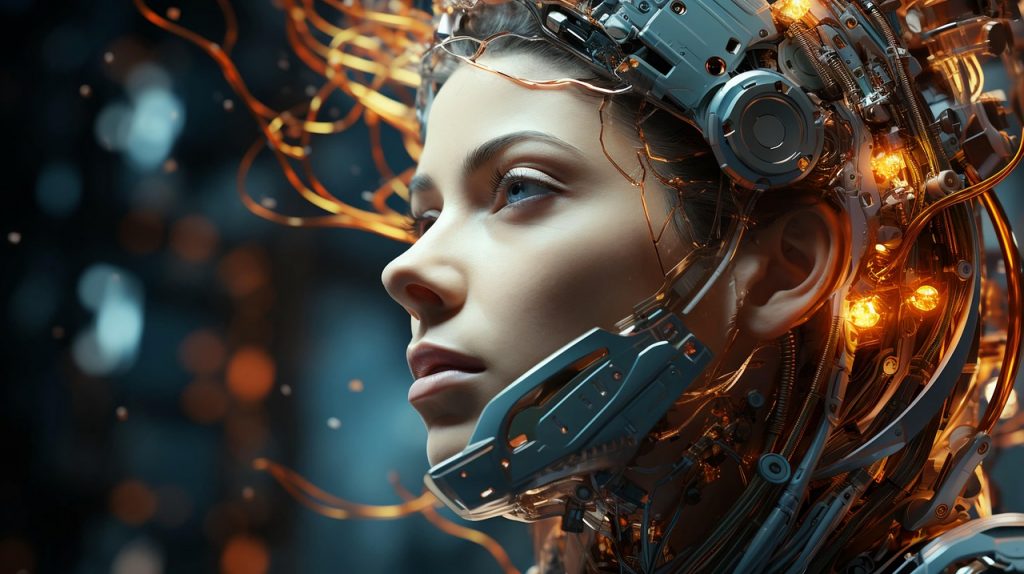
GUEST POST from Pete Foley
The rapid emergence of increasingly sophisticated ‘AI ‘ programs such as CHATgpt will profoundly impact our world in many ways. That will inevitably include Innovation, especially the front end. But will it ultimately help or hurt us? Better access to information should be a huge benefit, and my intuition was to dive in and take full advantage. I still think it has enormous upside, but I also think it needs to be treated with care. At this point at least, it’s still a tool, not an oracle. It’s an excellent source for tapping existing information, but it’s (not yet) a source of new ideas. As with any tool, those who understand deeply how it works, its benefits and its limitations, will get the most from it. And those who use it wrongly could end up doing more harm than good. So below I’ve mapped out a few pros and cons that I see. It’s new, and like everybody else, I’m on a learning curve, so would welcome any and all thoughts on these pros and cons:
What is Innovation?
First a bit of a sidebar. To understand how to use a tool, I at least need to have a reasonably clear of what goals I want it to help me achieve. Obviously ‘what is innovation’ is a somewhat debatable topic, but my working model is that the front end of innovation typically involves taking existing knowledge or technology, and combining it in new, useful ways, or in new contexts, to create something that is new, useful and ideally understandable and accessible. This requires deep knowledge, curiosity and the ability to reframe problems to find new uses of existing assets. A recent illustrative example is Oculus Rift, an innovation that helped to make virtual reality accessible by combining fairly mundane components including a mobile phone screen and a tracking sensor and ski glasses into something new. But innovation comes in many forms, and can also involve serendipity and keen observation, as in Alexander Fleming’s original discovery of penicillin. But even this requires deep domain knowledge to spot the opportunity and reframing undesirable mold into a (very) useful pharmaceutical. So, my start-point is which parts of this can CHATgpt help with?
Another sidebar is that innovation is of course far more than simply discovery or a Eureka moment. Turning an idea into a viable product or service usually requires considerable work, with the development of penicillin being a case in point. I’ve no doubt that CHATgpt and its inevitable ‘progeny’ will be of considerable help in that part of the process too. But for starters I’ve focused on what it brings to the discovery phase, and the generation of big, game changing ideas.
First the Pros:
1. Staying Current: We all have to strike a balance between keeping up with developments in our own fields, and trying to come up with new ideas. The sheer volume of new information, especially in developing fields, means that keeping pace with even our own area of expertise has become challenging. But spend too much time just keeping up, and we become followers, not innovators, so we have to carve out time to also stretch existing knowledge. But if we don’t get the balance right, and fail to stay current, we risk get leapfrogged by those who more diligently track the latest discoveries. Simultaneous invention has been pervasive at least since the development of calculus, as one discovery often signposts and lays the path for the next. So fail to stay on top of our field, and we potentially miss a relatively easy step to the next big idea. CHATgpt can become an extremely efficient tool for tracking advances without getting buried in them.
2. Pushing Outside of our Comfort Zone: Breakthrough innovation almost by definition requires us to step beyond the boundaries of our existing knowledge. Whether we are Dyson stealing filtration technology from a sawmill for his unique ‘filterless’ vacuum cleaner, physicians combining stem cell innovation with tech to create rejection resistant artificial organs, or the Oculus tech mentioned above, innovation almost always requires tapping resources from outside of the established field. If we don’t do this, then we not only tend towards incremental ideas, but also tend to stay in lock step with other experts in our field. This becomes increasingly the case as an area matures, low hanging fruit is exhausted, and domain knowledge becomes somewhat commoditized. CHATgpt simply allows us to explore beyond our field far more efficiently than we’ve ever been able to before. And as it or related tech evolves, it will inevitably enable ever more sophisticated search. From my experience it already enables some degree of analogous search if you are thoughtful about how to frame questions, thus allowing us to more effectively expand searches for existing solutions to problems that lie beyond the obvious. That is potentially really exciting.
Some Possible Cons:
1. Going Down the Rabbit Hole: CHATgpt is crack cocaine for the curious. Mea culpa, this has probably been the most time consuming blog I’ve ever written. Answers inevitably lead to more questions, and it’s almost impossible to resist playing well beyond the specific goals I initially have. It’s fascinating, it’s fun, you learn a lot of stuff you didn’t know, but I at least struggle with discipline and focus when using it. Hopefully that will wear off, and I will find a balance that uses it efficiently.
2. The Illusion of Understanding: This is a bit more subtle, but a topic inevitably enhances our understanding of it. The act of asking questions is as much a part of learning as reading answers, and often requires deep mechanistic understanding. CHATgpa helps us probe faster, and its explanations may help us to understand concepts more quickly. But it also risks the illusion of understanding. When the heavy loading of searching is shifted away from us, we get quick answers, but may also miss out on the deeper mechanistic understanding we’d have gleaned if we’d been forced to work a bit harder. And that deeper understanding can be critical when we are trying to integrate superficially different domains as part of the innovation process. For example, knowing that we can use a patient’s stem cells to minimize rejection of an artificial organ is quite different from understanding how the immune system differentiates between its own and other stem cells. The risk is that sophisticated search engines will do more heavy lifting, allow us to move faster, but also result in a more superficial understanding, which reduces our ability to spot roadblocks early, or solve problems as we move to the back end of innovation, and reduce an idea to practice.
3. Eureka Moment: That’s the ‘conscious’ watch out, but there is also an unconscious one. It’s no secret that quite often our biggest ideas come when we are not actually trying. Archimedes had his Eureka moment in the bath, and many of my better ideas come when I least expect them, perhaps in the shower, when I first wake up, or am out having dinner. The neuroscience of creativity helps explain this, in that the restructuring of problems that leads to new insight and the integration of ideas works mostly unconsciously, and when we are not consciously focused on a problem. It’s analogous to the ‘tip of the tongue’ effect, where the harder we try to remember something, the harder it gets, but then comes to us later when we are not trying. But the key for the Eureka moment is that we need sufficiently deep knowledge for those integrations to occur. If CHATgpt increases the illusion of understanding, we could see less of those Eureka moments, and the ‘obvious in hindsight ideas’ they create.
Conclusion
I think that ultimately innovation will be accelerated by CHATgpt and what follows, perhaps quite dramatically. But I also think that we as innovators need to try and peel back the layers and understand as much as we can about these tools, as there is potential for us to trip up. We need to constantly reinvent the way we interact with them, leverage them as sophisticated innovation tools, but avoid them becoming oracles. We also need to ensure that we, and future generations use them to extend our thinking skill set, but not become a proxy for it. The calculator has in some ways made us all mathematical geniuses, but in other ways has reduced large swathes of the population’s ability to do basic math. We need to be careful that CHATgpt doesn’t do the same for our need for cognition, and deep mechanistic and/or critical thinking.
Image credit: Pixabay
![]() Sign up here to get Human-Centered Change & Innovation Weekly delivered to your inbox every week.
Sign up here to get Human-Centered Change & Innovation Weekly delivered to your inbox every week.







